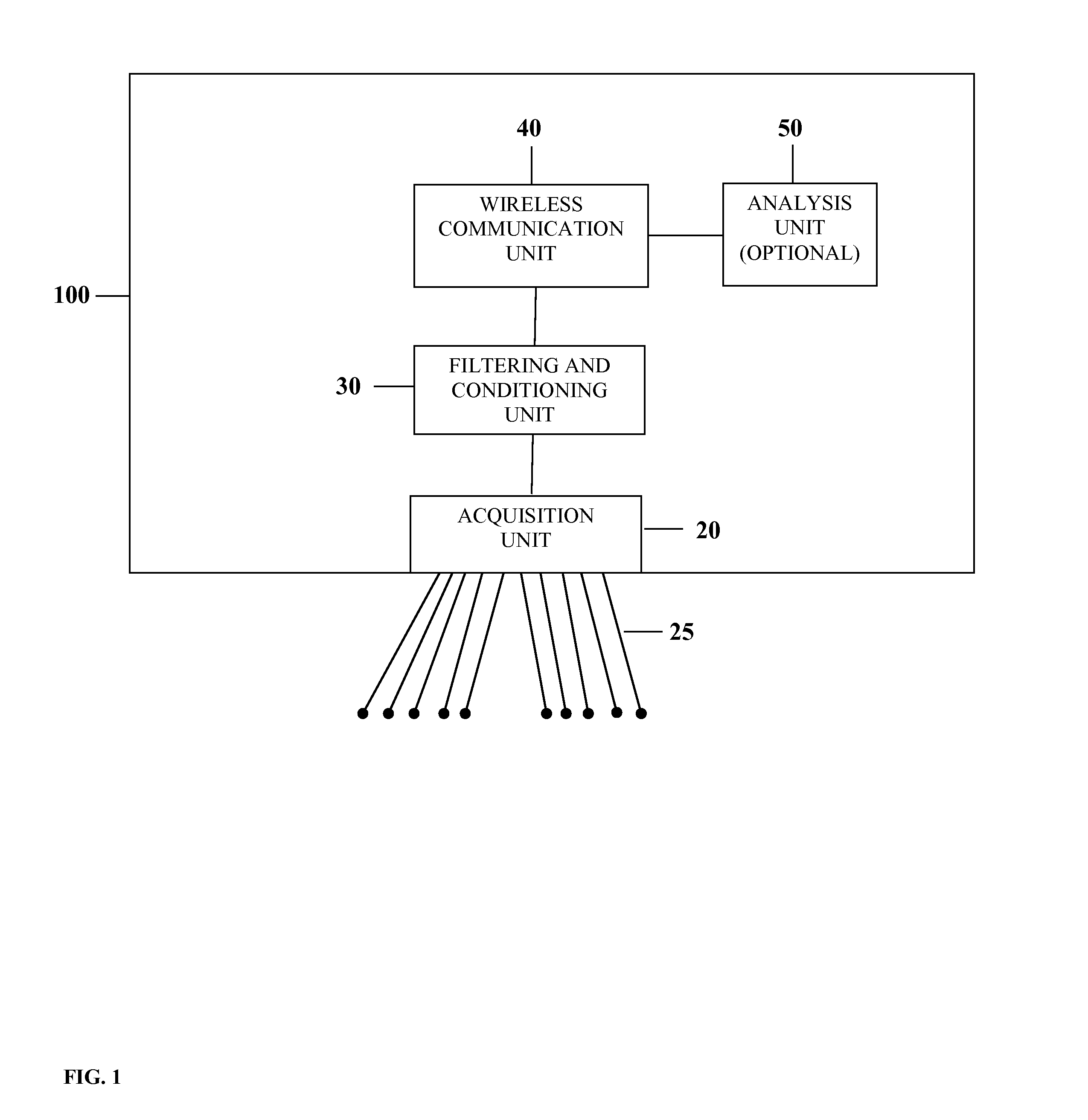Wireless health monitoring in the setting of X-ray, magnetic resonance imaging and other sources of electromagnetic interference
a wireless health monitoring and wireless technology, applied in the field of wireless biomedical devices and healthcare information management systems, can solve problems such as the need for data filtering
- Summary
- Abstract
- Description
- Claims
- Application Information
AI Technical Summary
Benefits of technology
Problems solved by technology
Method used
Image
Examples
example 1
Cardiovascular Magnetic-Resonance Imaging
[0110]Interventional MRI allows physicians to perform minimally invasive and catheter-based diagnostic procedures, providing high-quality images of internal organs, without exposure to harmful ionizing radiation. I-MRI requires telemetry monitoring of patients' vital signs; however, existing telemetry monitors have electromagnetic compatibility (EMC) issues: MRI equipment is affected by electromagnetic interference (EMI) from telemetry systems, and telemetry data are degraded by the EMI generated by the MRI scanner. Commercial applications of the technology are expected to be in all areas of I-MRI. Because I-MRI enables physicians to perform minimally invasive procedures, eliminating the need for more invasive and traumatic procedures, its role in diagnostic evaluation is expected to grow rapidly.
[0111]As the field and applications of I-MRI continue to grow and diversify, the need for wireless-telemetry monitoring of various physiological sig...
example 2
MRI-Guided Cardiac Electrophysiology Study
[0117]This hypothetical example describes application of a medical device of this invention for the MR-guided cardiac electrophysiology imaging. The monitoring procedure is similar to that described in example 1. However, the system configuration required for this time-critical setting is different. First, the system uses two parallel data streams passed through both Filterbanks I and II, to allow clinicians monitor interchangeably or concurrently signals passed through both filterbanks Second, all data channels are transmitted at two different frequencies (2.4 and 5.2 GHz), using two wireless transmitters, to ensure uninterrupted transmission of all data channels in this time-critical setting. This redundant transmission ensures that the receiving station receives all the data channels if one transmission frequency becomes unavailable or experiences a transmission delay.
example 3
Magnetic-Resonance Imaging of the Brain
[0118]This hypothetical example describes application of a medical device of this invention for high-resolution brain imaging requires data recording from up to 100 channels simultaneously, at a high sampling frequency. The monitoring and setup procedures are similar to those described in examples 1 and 2. However, because the number of monitoring channels is bigger, the system configuration is expanded to include ten data acquisition modules with associated wireless transmitters, which are time-synchronized as described above.
PUM
 Login to View More
Login to View More Abstract
Description
Claims
Application Information
 Login to View More
Login to View More - R&D
- Intellectual Property
- Life Sciences
- Materials
- Tech Scout
- Unparalleled Data Quality
- Higher Quality Content
- 60% Fewer Hallucinations
Browse by: Latest US Patents, China's latest patents, Technical Efficacy Thesaurus, Application Domain, Technology Topic, Popular Technical Reports.
© 2025 PatSnap. All rights reserved.Legal|Privacy policy|Modern Slavery Act Transparency Statement|Sitemap|About US| Contact US: help@patsnap.com



